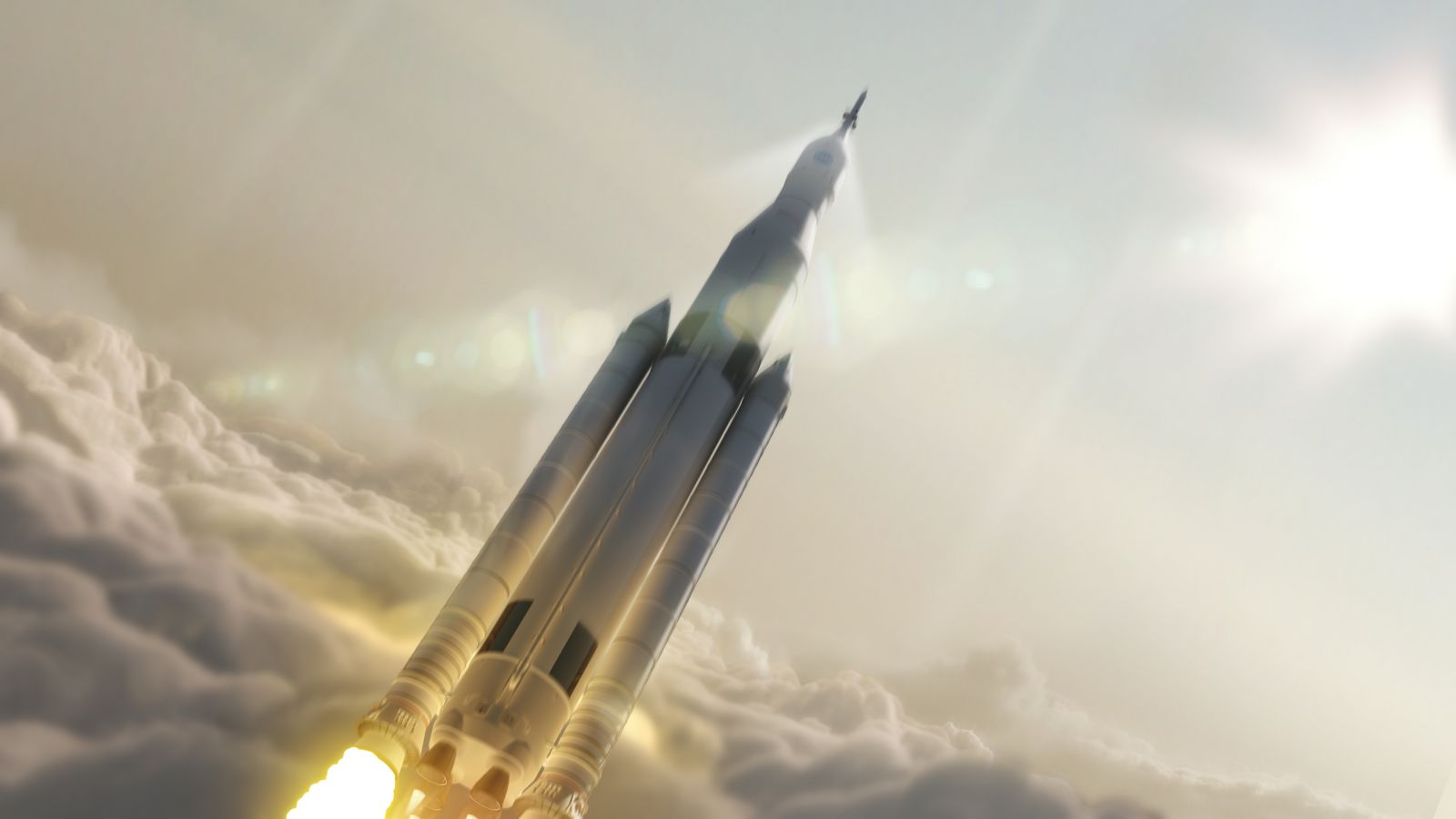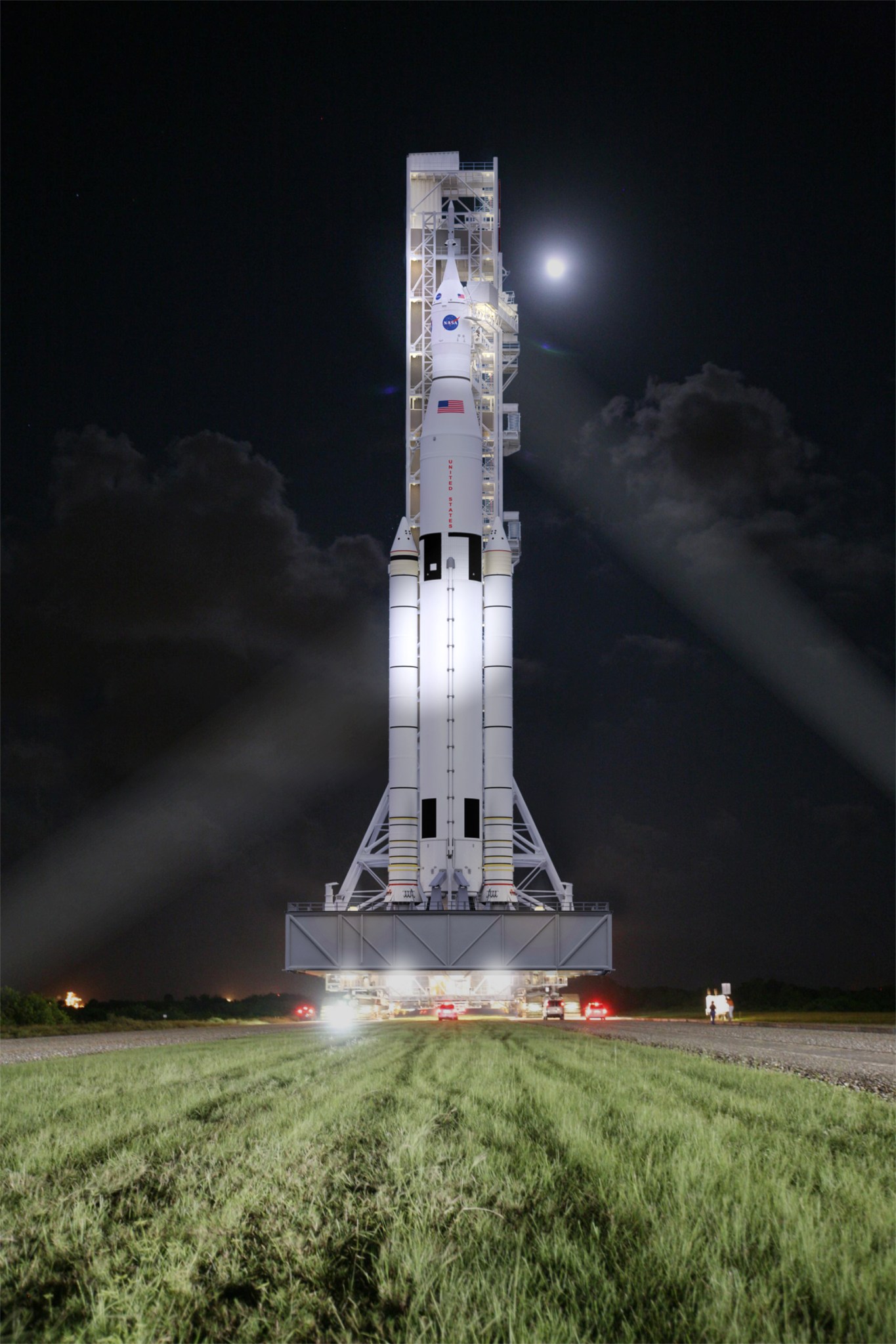
During its two-year mission, MMS will explore the mystery of how magnetic fields around Earth connect and disconnect, explosively releasing energy — a process known as magnetic reconnection. The four MMS spacecraft will provide the first three-dimensional views of this fundamental process that occurs throughout our universe.
Image Credit: NASA’s Goddard Space Flight Center/Bill Hrybyk
NASA officials Wednesday announced they have completed a rigorous review of the Space Launch System (SLS) — the heavy-lift, exploration class rocket under development to take humans beyond Earth orbit and to Mars — and approved the program’s progression from formulation to development, something no other exploration class vehicle has achieved since the agency built the space shuttle.
“We are on a journey of scientific and human exploration that leads to Mars,” said NASA Administrator Charles Bolden. “And we’re firmly committed to building the launch vehicle and other supporting systems that will take us on that journey.”
For its first flight test, SLS will be configured for a 70-metric-ton (77-ton) lift capacity and carry an uncrewed Orion spacecraft beyond low-Earth orbit. In its most powerful configuration, SLS will provide an unprecedented lift capability of 130 metric tons (143 tons), which will enable missions even farther into our solar system, including such destinations as an asteroid and Mars.
This decision comes after a thorough review known as Key Decision Point C (KDP-C), which provides a development cost baseline for the 70-metric ton version of the SLS of $7.021 billion from February 2014 through the first launch and a launch readiness schedule based on an initial SLS flight no later than November 2018.
Conservative cost and schedule commitments outlined in the KDP-C align the SLS program with program management best practices that account for potential technical risks and budgetary uncertainty beyond the program’s control.
“Our nation is embarked on an ambitious space exploration program, and we owe it to the American taxpayers to get it right,” said Associate Administrator Robert Lightfoot, who oversaw the review process. “After rigorous review, we’re committing today to a funding level and readiness date that will keep us on track to sending humans to Mars in the 2030s – and we’re going to stand behind that commitment.”
“The Space Launch System Program has done exemplary work during the past three years to get us to this point,” said William Gerstenmaier, associate administrator for the Human Explorations and Operations Mission Directorate at NASA Headquarters in Washington. “We will keep the teams working toward a more ambitious readiness date, but will be ready no later than November 2018.”
The SLS, Orion, and Ground Systems Development and Operations programs each conduct a design review prior to each program’s respective KDP-C, and each program will establish cost and schedule commitments that account for its individual technical requirements.
“We are keeping each part of the program — the rocket, ground systems, and Orion — moving at its best possible speed toward the first integrated test launch,” said Bill Hill, director Exploration Systems Development at NASA. “We are on a solid path toward an integrated mission and making progress in all three programs every day.”
“Engineers have made significant technical progress on the rocket and have produced hardware for all elements of the SLS program,” said SLS program manager Todd May. “The team members deserve an enormous amount of credit for their dedication to building this national asset.”
The program delivered in April the first piece of flight hardware for Orion’s maiden flight, Exploration Flight Test-1 targeted for December. This stage adapter is of the same design that will be used on SLS’s first flight, Exploration Mission-1.
Michoud Assembly Facility in New Orleans has all major tools installed and is producing hardware, including the first pieces of flight hardware for SLS. Sixteen RS-25 engines, enough for four flights, currently are in inventory at Stennis Space Center, in Bay St. Louis, Mississippi, where an engine is already installed and ready for testing this fall. NASA contractor ATK has conducted successful test firings of the five-segment solid rocket boosters and is preparing for the first qualification motor test.
SLS will be the world’s most capable rocket. In addition to opening new frontiers for explorers traveling aboard the Orion capsule, the SLS may also offer benefits for science missions that require its use and can’t be flown on commercial rockets.
The next phase of development for SLS is the Critical Design Review, a programmatic gate that reaffirms the agency’s confidence in the program planning and technical risk posture.
For more information about SLS, visit:
-end-
Stephanie Schierholz
Headquarters, Washington
202-358-1100
stephanie.schierholz@nasa.gov
























